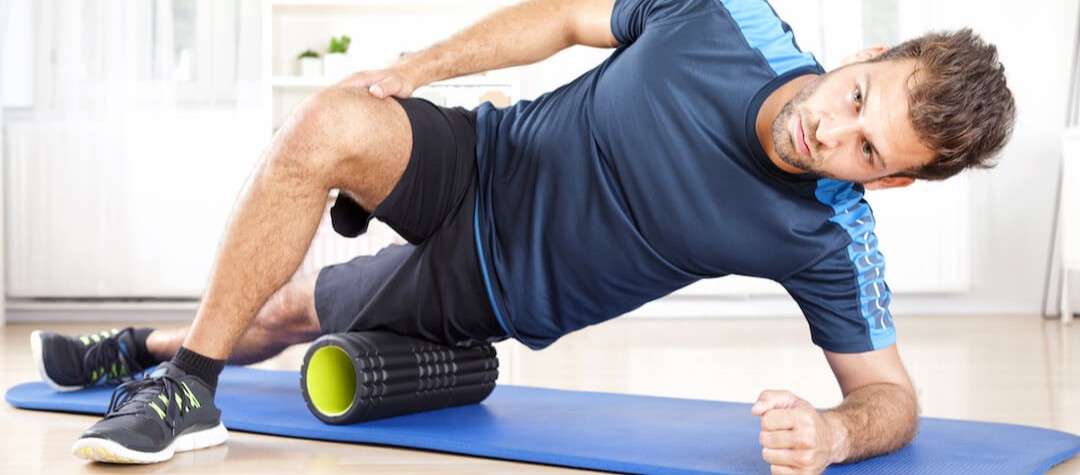Foam rolling could mean the difference between trouble free running and weeks out with injury. Check out this handy guide to find out everything you need to know about this amazing injury prevention method.
What is a foam roller?
Up until quite recently, a discussion around foam rolling would bring about some confusing looks. The most basic of foam rollers look similar to the ‘pool noodle’ floatation devices you’ll see at swimming pools, only more dense and wider in diameter.
A foam roller is used to supplement the work of a deep tissue specialist; such as a physio, sports massage therapist, or osteopath. Using a foam roller correctly, along with your own body weight, is called self myofascial release (SMR).
Why should runners foam roll?
Runners should foam roll for many reasons, including sedentary lifestyles, sitting down too much, overworked muscles, not enough stretching or injuries, and because fascia and underlying muscle tissue within the body can become stuck together. This is called an adhesion, knot, or trigger point, depending on the orientation of the therapist diagnosing.
These adhesions result in restricted muscle movement. With this comes a reduction in flexibility, and muscle efficiency, and if untreated can lead to symptomatic pain and injury.
Techniques such as foam rolling can lead to improved range of motion, flexibility and movement, increased blood flow, and will assist in returning your muscles to normal function.
SMR techniques help break up trigger points, and soothe tight fascia, while increasing blood flow and circulation to the soft tissues. Techniques such as foam rolling can lead to improved range of motion, flexibility and movement, increased blood flow, and will assist in returning your muscles to normal function.
Different types of foam rollers
If you search for a foam roller you will notice a whole range of different sizes and densities, as well the newer breed of hollow core rollers with fancy nodules. Choosing the right roller is purely down to the individual. There are a few things to think about when buying, including cost, durability, and also your pain threshold.
The solid dense foam rollers are at the lowest end of the price bracket and, with that, have the shortest functioning lifespan. Over a period of time, with regular weight bearing SMR, the foam loses its shape and the benefits are reduced. If you have a low pain threshold, a lot of adhesions, or are new to foam rolling, then a dense EVA (ethylene vinyl acetate) roller is a good starting point.
Newer foam rollers have a dense, or hollow, plastic core. This significantly increases the longevity of the product, as the core keeps the foam roller’s shape. The foam won’t disfigure, and you will be able to get a deeper massage. They are more expensive, but well worth the investment. You will also find foam rollers with various contours, designed to give a more intense massage. Most running shops will have a selection of rollers, so you can try different types and see what works for you.
Does foam rolling really work?
Like any practise, there is always debate around the effectiveness of the technique but recent research is backing up the effectiveness of the applications of SMR and foam rolling. There is an increasing consensus that runners should be using a foam roller before and after training, as well as on recovery days.
Foam rollers simply allow people to easily experience a deep massage without the price-tag.
Foam rollers simply allow people to easily experience a deep massage without the price-tag. Another thing that is important to note is the need to be well hydrated as it will make the tissue more pliable. Dehydrated tissue is glued-down and sticky, which creates adhesions and increased movement dysfunction.
How to foam roll
To get started in foam rolling – follow the four key steps below:
1. Roll the entire length of the muscle (8-10 times)
2. Return to any tender areas and maintain pressure
3. Breathe deeply and relax (for between 30-45 seconds)
4. As pain/tenderness disperses (by 50-75%), move onto the next tender area
Which muscles should you foam roll?
You can use a foam roller to target any part of the body, so it’s about experimenting what works for you. With runners, the general areas to pay particular attention to are the feet, calves, glutes and adductors. Each area is explained in more detail below:
Feet
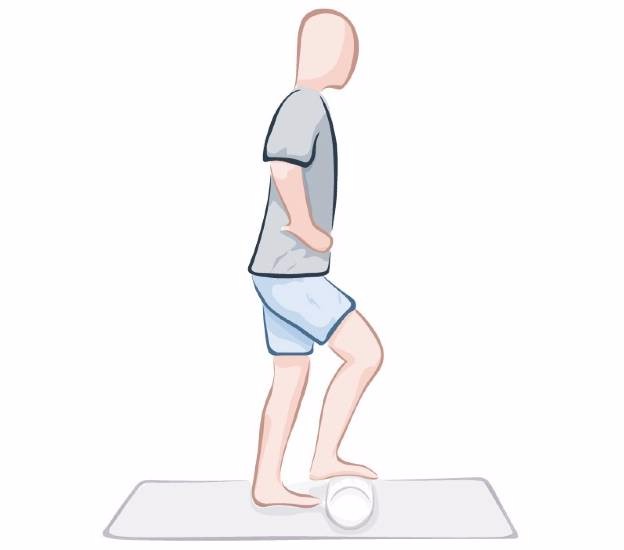
Poor mobility around the foot and ankle is a major contributor to injuries throughout the body. We spend so much time on our feet, so they do need looking after. Due to circulatory difficulties, the fascia and the large number of muscles at the base of our feet get tight, and the frequent build up of adhesions occurs.
Place one foot across the top of your foam roller. Apply pressure and slowly roll from toe to heel. You can also angle your foot to ensure you target the arch and the outer portion of your foot. If you don’t get much purchase from the foam roller then use a golf ball, hockey ball or similar, to massage. This can be a lot more intense, but you can really target specific tight areas.
Quadriceps and hip flexors
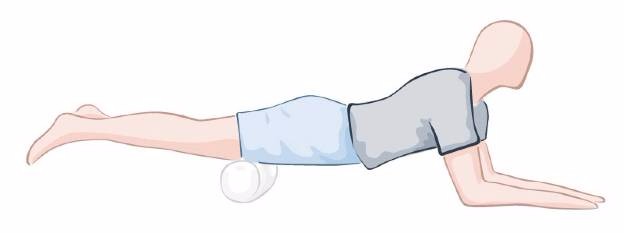
Sedentary lifestyles, and being in a seated position more than ever, has led to huge tightness and postural issues for a number of us. As a result, our quadriceps and hip flexors need some attention.
Start in a face down position, resting on your forearms with the foam roller just above your knee. Ensure you contract your abs and back muscle to prevent any unnecessary pressure on your spine. Slowly roll up towards just below your hip and spend more time on any tender areas that you locate. The quads are a large muscle group, so don’t neglect the more medial or lateral aspects of the quad. You can do this by tilting your body.
Adductors
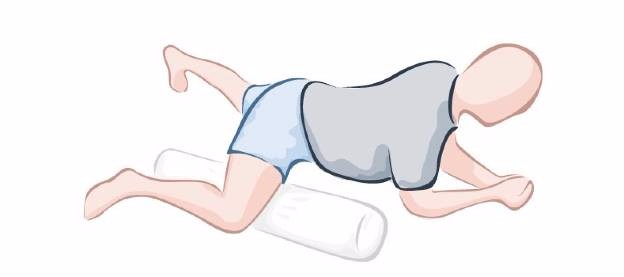
The adductors are one of the most important muscles to target. They get extremely tight in runners and are often neglected, particularly during post run stretches. They are a muscle group that runs along the inner thigh and, if overly tight, can inhibit your glutes.
Lie in a face down position, turn one leg out and rest the foam under your inner thigh. It does look a little awkward and you may get some funny looks if you do in public, but it is really important. Start with the roller close to your groin and roll down towards your knee. They can be particularly tender, so take your time rolling.
Tensor fasciae latae ( TFL) and Iliotibial Band (ITB)
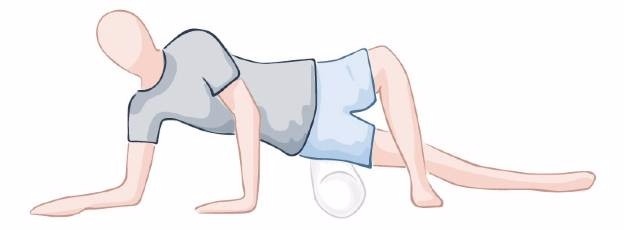
This muscle, and the attached tendon, can often be the cause of a number of problems. ITB syndrome, for example, is a common problem in runners who increase mileage too quickly, and is more common in females due to their generally wider pelvis structure.
Lie on your side, with the foam roller sitting just above your knee towards the outer thigh. Cross over your other leg, rest on your forearm, and slowly roll up towards you hip. When you first apply pressure to your ITB it can be painful. If you can, then stick with it, as over time the pain will reduce. If it is too much, then go and see a deep tissue specialist who can work on your first.
You can progress this, and apply more pressure, by resting your leg on top of the one you are currently working.
Glutes and Piriformis
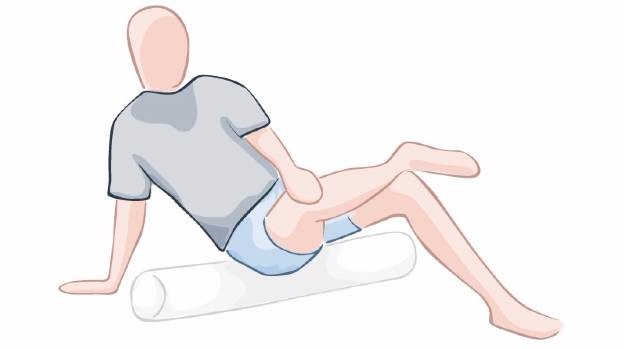
The glutes are such an important muscle for runners to utilise. Unfortunately, a vast majority of runners have difficulty in engaging their glutes, so they are missing out on improved running technique, pelvis stability, and power.
The piriformis is a small muscle located within the glutes (its position, size, and structure can vary with individuals). Due to the sciatic nerve travelling through it, or close to it (depending on the individual), when it’s tight or in spasm it can bring some negative symptoms. This includes sciatica-type symptoms (piriformis syndrome), and also the glutes then have an inability to engage correctly.
Sit on a foam roller, lean slightly to whichever side you are targeting, and gently roll around the muscle. Whilst still focused on that side, cross the opposing leg over your knee. This will open up your hip joint and allow you to target your piriformis.
This can be extremely painful with some individuals, so take your time and ensure that your muscles are relaxed.
Hamstrings
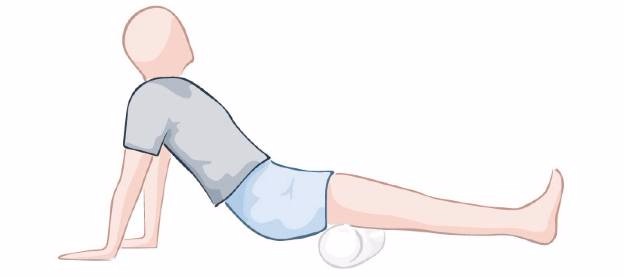
The hamstrings are a really important muscle for runners, and by keeping them flexible you will improve your performance and can also relieve and prevent lower back pain.
Sit on a foam roller with your legs outstretched. Place your hands behind you for support. Roll from just behind your knee to the base of your glutes, pausing at any tender areas. You can work different parts and angles of your hamstrings by turning your feet in or out.
Back
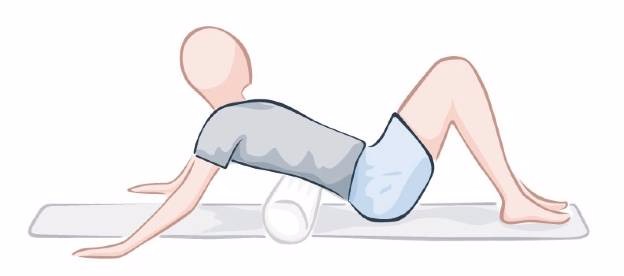
Work load, being seated too long, high stress levels, and other factors, contribute to tight/weak upper back muscles and poor rotation through your thoracic spine. This dysfunction can cause pain and inefficient running technique. Foam rolling is a great way to unlock some of these muscles and free up your movement.
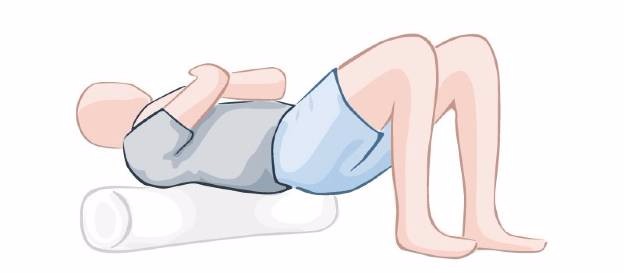
Lie on your back and place the foam roller beneath your upper neck, near your shoulder blades. Your feet and backside should be on the ground. Cross your arms across your chest, brace your abs, and slowly roll from your upper neck to the middle of your back. To increase the pressure, you can bridge your glutes off the floor whilst you roll.
Important - please note the following when using a foam roller:
- It is important to relax into these exercises, with slow and deliberate movements.
- There is no set time or rep range with foam rolling; the goal is to release tight muscle, increase flexibility, and promote muscle and joint health.
- Some areas can be extremely painful when initially targeting. Stick with it, as after a few sessions the discomfort will reduce and the benefits will increase.
- If you are unsure with any of the techniques, or find them too painful, then seek the advice and assistance of a professional.

